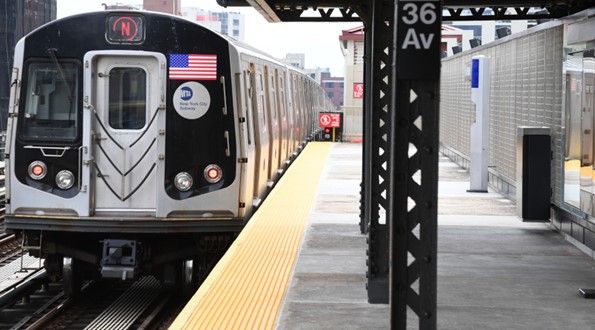Federal Transit Administration Awards Six Grants In Region to Improve Accessibility on Rail Systems
WASHINGTON—The FTA on Monday announced it will award six grants in the region to improve accessibility for people with disabilities at rail transit systems, especially targeting the oldest facilities. The $320 million in grants for New York, New Jersey and Connecticut region is the first round of the new funding mechanism called the All Stations Accessibility Program (ASAP), which will help transit agencies build elevators, ramps and other upgrades.
The program is funded at $1.75 billion over five years through President Biden’s Bipartisan Infrastructure Law, which was authorized in 2021. These first-round grants are part of the $686 million in 15 grants awarded to nine states, which also include Pennsylvania, Illinois, Maryland, Massachusetts, Ohio and Washington.

The ASAP program designed to improve the accessibility of transit rail stations so everyone, the FTA said. FTA Administrator Nuria Fernandez told reporters that more than 900 rail stations in the United States — about 25 percent — are inaccessible more than 30 years after the enactment of the Americans with Disabilities Act. U.S. Transportation Secretary Pete Buttigieg added that “parents moving kids in strollers, musicians moving instruments” will also benefit from the changes.
Grants awarded in the region include:
New York State
The Metropolitan Transportation Authority will receive $254 million to make its Myrtle Avenue, Norwood Avenue and Avenue I subway stations in Brooklyn and the Burnside Avenue subway station in the Bronx fully ADA accessible, allowing safe and convenient travel to and through the stations. Modernization work will include installing elevators, updating platforms to reduce gaps, adding tactile platform edge warning strips, modifying fare gates, stairs, and improving handrails.
The Port Authority Trans-Hudson (PATH) Corporation will receive $1.59 million to study four stations (Christopher St., 9th St., 14th St., and 23rd St.) in Manhattan built in the early 20th century and assess what upgrades and alterations are needed to bring them into alignment with ADA standards. These stations currently do not have any elevators to enter or exit the mezzanine area or the station platform.
Connecticut
The Connecticut Department of Transportation will receive $29.6 million in funding to retrofit three stations on its Metro-North Railroad Waterbury Branch commuter rail line, which provides service to New York City, to make them fully accessible to passengers with disabilities. Improvements to the century-old stations include building a high-level rail platform and installing handrails, which will provide more equitable service and increase access to jobs.
New Jersey
The New Jersey Transit Corporation will receive $18.1 million in funding to improve accessibility at the Anderson St-Hackensack and New Bridge Landing stations on the Pascack Valley Line, allowing safe and accessible transit for all riders traveling between northern New Jersey and southern New York. Improvements include replacing low-level platforms with higher platforms, building fully accessible ramps, installing tactile warning strips, adding accessible parking spaces and inclusive wayfinding technology and upgrading the communications system.
The New Jersey Transit Corporation will receive $1.4 million to study and design new platforms at two stations on the Morristown Line that are not ADA accessible because of geographical challenges. NJ Transit will develop new designs for its Chatham and Orange Stations along with implementation strategies and apply the recommendations from this study to other inaccessible stations.
The New Jersey Transit Corporation will receive $14.5 million to improve accessibility at the Bradley Beach station on the North Jersey Coast Line, which connects New York Penn Station, Newark, and communities along the northern portion of the Jersey Shore. The improvements, which will allow for safe and accessible travel, include replacing low-level platforms with higher ones, building fully accessible ramps, installing tactile warning strips, adding accessible parking spaces and inclusive wayfinding technology and upgrading the communications system.
